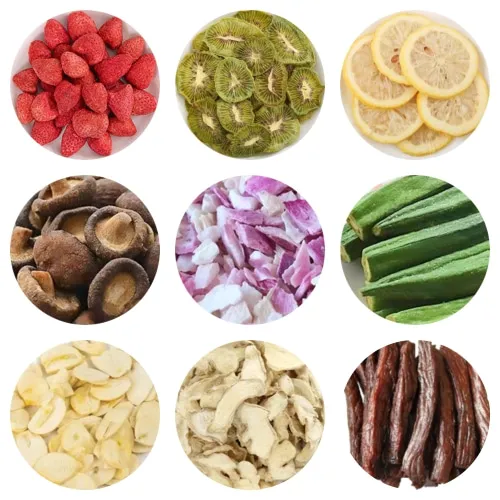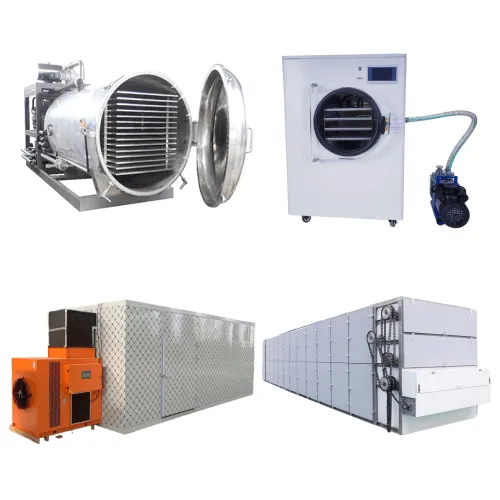General Temperature Guidelines for Jerky
The recommended temperature range for dehydrating jerky safely is 145°F to 165°F (63°C to 74°C), balancing food safety and texture.
Getting it right: Perfecting your jerky temperature is key—too low risks bacterial growth, while too high compromises texture. Here’s how to achieve the ideal balance for delicious, safe results.
Dive deeper:
The USDA recommends dehydrating jerky at 145°F (63°C) or higher to eliminate pathogens like E. coli and Salmonella. However, the best results depend on these factors:
-
Meat type:
- Beef/Venison: 160°F (71°C) ensures safety without over-drying.
- Poultry: 165°F (74°C), the USDA’s minimum for safe poultry preparation.
- Fish: 145°F (63°C) maintains tenderness without excessive firmness.
-
Equipment variations:
Home dehydrators Commercial dryers 145–165°F 130–155°F Longer drying Faster, precise
Pro tips for jerky preparation:
- Always use a thermometer to check your dehydrator’s actual temperature—some models run hotter or cooler than set.
- Preheat to 160°F before adding meat, then reduce to 145°F after the first hour to preserve texture.
Shelf life considerations: Jerky dried at 160°F+ lasts longer but may be tougher. Lower temperatures (145°F) yield a chewier texture but require vacuum-sealing for optimal storage.
Want to explore how different jerky types respond to heat? The next section details specifics for beef, poultry, and more.
Temperature Variations by Meat Type
Leading paragraph: Achieving the perfect temperature for dehydrating jerky isn’t just about flavor—it’s a critical step for food safety. Different meats require specific heat levels to eliminate harmful bacteria while maintaining ideal texture.
Snippet paragraph: For safe and delicious jerky, follow these recommended temperatures: beef at 160°F (71°C), poultry at 165°F (74°C), fish at 145°F (63°C), and game meats at 155°F (68°C). Adjustments may be needed based on thickness and marinade ingredients.
Dive-Deeper paragraph:
- Beef: The USDA standard of 160°F (71°C) ensures pathogens like E. coli are eliminated. For even drying, slice thinly (¼ inch); thicker cuts require extended dehydration time.
- Poultry (chicken/turkey): Reaching 165°F (74°C) is essential to neutralize salmonella. Pre-cooking to this temperature before dehydrating adds an extra layer of safety.
- Fish: A temperature of 145°F (63°C) prevents parasites. Avoid oily fish like salmon unless frozen first to kill potential worms.
- Game meats (venison, bison): Leaner than beef, these meats benefit from 155°F (68°C) to balance safety and moisture retention.
| Meat Type | Safe Temperature | Key Consideration |
|---|---|---|
| Beef | 160°F (71°C) | Slice against the grain for tenderness |
| Poultry | 165°F (74°C) | Pre-cook to prevent rubbery texture |
| Fish | 145°F (63°C) | Freeze wild-caught fish for 7 days first |
| Game | 155°F (68°C) | Trim excess fat to avoid rancidity |
For jerky preparation, reduce sugar in marinades when dehydrating below 160°F to prevent stickiness. Proper airflow is also crucial—rotate trays in dehydrators for consistent results.
Wondering how commercial jerky temperature settings compare to home methods? The next section explores the differences.
Homemade vs. Commercial Jerky Preparation
Leading paragraph:
Whether you're using a home dehydrator or commercial equipment, temperature settings for jerky preparation balance safety, speed, and texture—but the approaches differ significantly.
Snippet paragraph:
Home dehydrators typically operate at 145°F–160°F (63°C–71°C), while commercial setups often exceed 160°F (71°C) for faster drying and stricter compliance with food safety standards.
Dive-Deeper paragraph:
Home dehydrators emphasize accessibility and flexibility:
- Recommended temperatures: 145°F–160°F (63°C–71°C), aligning with USDA guidelines to eliminate pathogens while preserving texture.
- Drying time: 4–12 hours, varying with meat thickness and humidity levels.
- Limitations: Lower-cost models may require tray rotation due to uneven airflow.
Commercial systems prioritize efficiency and consistency:
- Higher temperature settings: Typically 160°F–200°F (71°C–93°C) to accelerate large-batch dehydrating.
- Advanced controls: Industrial units feature precision fans and humidity sensors for uniform results.
- Safety standards: Must adhere to rigorous protocols like HACCP plans for bacterial reduction.
Key trade-offs:
| Factor | Home Dehydrators | Commercial Equipment |
|---|---|---|
| Cost | $50–$300 | $2,000+ |
| Batch size | 1–5 lbs (0.5–2.3 kg) | 20+ lbs (9+ kg) |
| Texture control | Manual adjustments | Automated precision |
For home cooks, preheating meat to 160°F (71°C) before dehydrating at 145°F (63°C) can approximate commercial safety standards. Large producers often supplement with post-drying pasteurization.
Curious how temperature affects jerky’s shelf life? The next section explores the science behind preservation for different jerky types.
Impact of Temperature on Texture and Shelf Life in Jerky Preparation
The ideal dehydrating temperature for jerky is 160°F (71°C) for meat and 165°F (74°C) for poultry—a sweet spot that ensures food safety while optimizing texture and shelf life.
Getting the temperature right when dehydrating jerky goes beyond safety—it shapes the final product's chewiness, flavor, and longevity. Too low, and you risk bacterial growth; too high, and you'll end up with tough, brittle strips.
Here's how temperature settings influence your jerky:
-
Texture Control
Lower temperatures (140-155°F/60-68°C) yield softer, more pliable jerky but require extended drying times. Higher ranges (165-175°F/74-79°C) deliver firmer, snappier textures faster—ideal for those who prefer a hearty bite. -
Flavor Development
Moderate heat (155-165°F/68-74°C) concentrates flavors without scorching marinades. The USDA-recommended 160°F minimum ensures pathogens are eliminated while preserving taste integrity. -
Shelf Life Optimization
Properly dehydrated jerky at safe temperatures lasts:- 1-2 months at room temperature in airtight containers
- 6-12 months refrigerated
- Up to 1 year frozen
Key trade-offs to weigh when selecting recommended temperatures:
| Temperature Range | Pros | Cons |
|---|---|---|
| 140-155°F (60-68°C) | Tender, succulent texture | Longer drying, increased bacteria risk |
| 160-165°F (71-74°C) | Optimal safety with balanced texture | Slightly denser chew |
| 170°F+ (77°C+) | Rapid dehydration | Overly dry, crumbly results |
Pro tips for perfect jerky preparation:
- Verify your dehydrator's actual temperature with a thermometer
- Slice meat uniformly (¼" thickness ensures even drying)
- Rotate trays periodically for consistent results
Curious how different jerky types—like beef, poultry, or fish—respond to these temperatures? The next section details tailored recommendations for each variety.
Additional Factors Affecting Temperature Settings
Leading paragraph: Perfecting your jerky's temperature settings goes beyond meat selection—it's about mastering the variables that determine quality and safety.
Snippet paragraph: When dehydrating jerky, optimal temperature adjustments depend on meat thickness, marinade composition, and airflow. Thicker cuts or sugar-based sauces often require lower heat to prevent burning while ensuring proper dehydration.
Dive-Deeper paragraph:
Three critical elements demand precise temperature calibration:
-
Meat thickness
- Thin slices (¼ inch): 160°F (71°C) efficiently dries without over-dehydrating.
- Thick cuts (½ inch+): Reduce to 145°F (63°C) and extend drying time to avoid charring.
-
Marinades
- High-sugar sauces (teriyaki, honey glaze): Lower to 140–150°F (60–65°C) for gradual caramelization.
- Salt or vinegar-based brines: Can safely tolerate 160°F (71°C) for thorough dehydration.
-
Airflow
- Overloaded trays: Create uneven drying; rotate trays and decrease temperature by 5°F (3°C).
- Commercial dehydrators: Achieve 20% faster drying than home units at identical temperature settings.
Pro tip: Always verify internal temperatures—poultry jerky must reach 160°F (71°C), while beef and fish require 145°F (63°C), regardless of other adjustments.
For ideal texture and extended shelf life, the following section explores how temperature influences jerky's chewiness and preservation.



